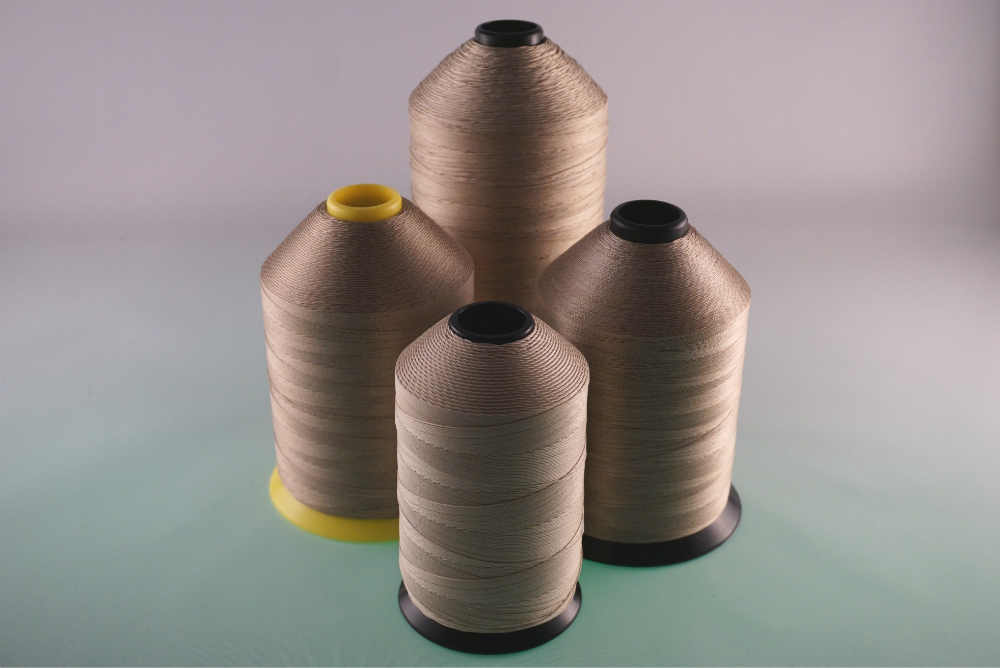PTFE Coated Fiberglass, PTFE Coated S-2 glass, PTFE coated Quartz and other high temperature, composite sewing threads offer amazing operating characteristics. Unaffected by most chemicals, they will not burn, will not support flame, will not rot or support fungus. Our PTFE coated quartz thread operates to 2,000 deg. F. Amazing! However, you wouldn’t use these threads unless you have to, not necessarily because they’re overly expensive, but because they require a special skill set in order to make them work. If your application needs these properties, however, there are no alternatives. I like to say this is OK because it prevents everyone with a sewing machine in their garage from becoming your competitor! It’s not as easy as changing a bobbin and switching from polyester to S-2 fiberglass with Inconel wire twisted into the thread!
As mentioned, this is not a drop-in substitute for an aramid, polyester, or any other thread. There is a learning curve to go through if unfamiliar with this type of thread. The very unique and extreme operating properties of PTFE coated fiberglass (or S-2 glass, Quartz, wire inserted, etc.) threads require operator training and machine adjustments to make them work acceptably.
First of all, a factory lubricated thread is going to be much easier to use. This lubricant is applied after PTFE coating. We offer two high speed thread lubricants. X80 is a silicone/mineral oil based thread lubricant and is, by far, the most popular choice. This product is ideally suited for extreme needle heat environments when sewing through multiple layers of thermal insulation, like silica blankets, ceramic fiber mats, texturized glass, etc… We also offer a wax based thread lubricant (X50) that is used occasionally for lighter duty applications. In a few cases, customers will “post bake” the final product to remove any residual oils.
With or without the use of lubricants, the following suggestions help dramatically.
SLOW DOWN. Especially if un-lubricated thread is being used.
Change all hooks, needles, tension guides, etc. Anything that touches the thread must be free of burrs, gouges, etc. These items will need to be changed regularly.
Be sure the tension device where the thread comes out of the bobbin case is new and burr-free.
Use the correct needle size. We’re happy to help out with a suggestion.
Be sure there are no grooves where the thread passes through the hole in the walking foot. No rubbing or abrasion points.
If sewing with a wire inserted (Stainless steel, Inconel or other), try placing a nylon stocking over the thread spool and pass the thread through a hole in the top of the stocking. This helps prevent free-spooling of the thread and minimizes any “kinking” due to the steel or wire insert.
There will likely still be breaks occurring, but the properties of these threads are outstanding and we must sometimes put these difficulties in order to take advantage of these amazing products.
As always, let us know if you have any questions or comments.

